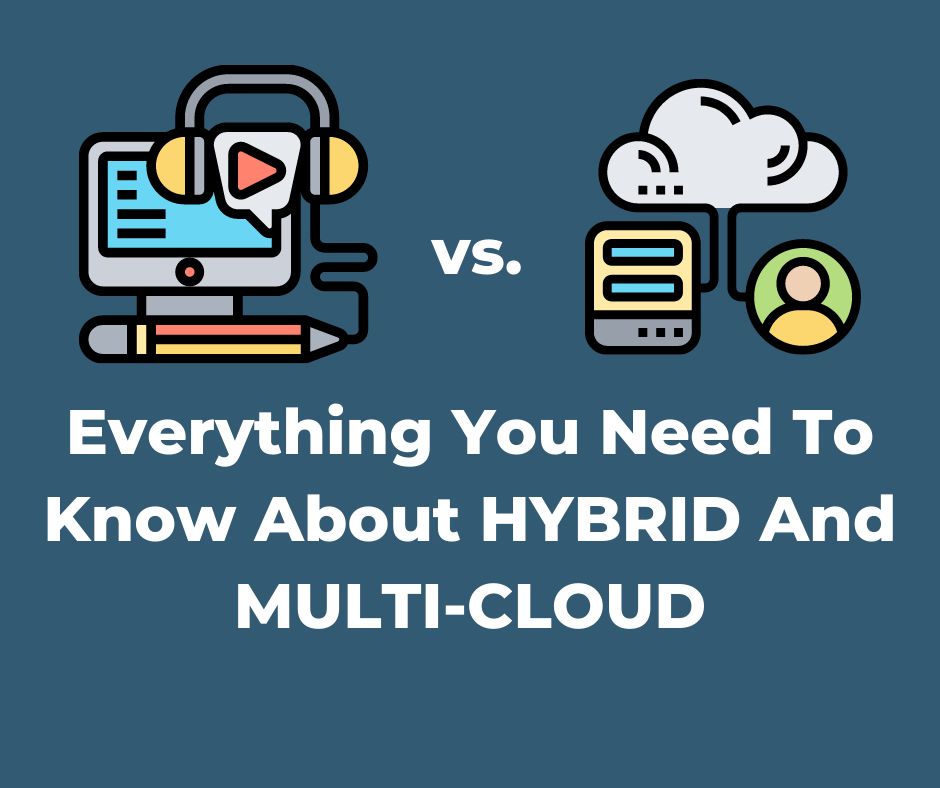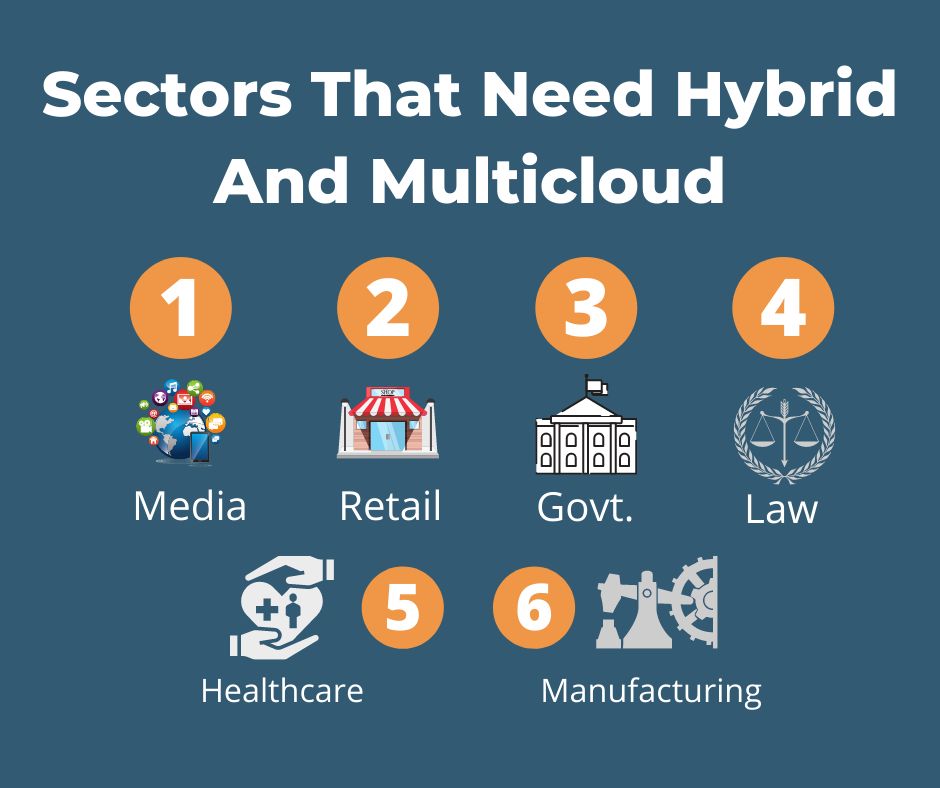Hybrid cloud is a term used to refer to the IT environments that are made up of multiple clouds, where each cloud type serves a different purpose. (For example, an on-premises private cloud for mission-critical workloads and public IaaS/PaaS for flexible workloads). The ability to choose the right type of cloud for your application, to provide the right balance between control, cost, and capability. Multi-Cloud is an approach to supporting applications that are deployed across multiple cloud platforms. It allows you to manage applications across multiple public clouds or on-premises through a single interface, delivering greater choice and flexibility without requiring major investments in new technologies or skills.
Multi-Cloud is an example of the idea that clouds are commodities and an organization should treat them as such. Multi-Cloud is not to be confused with hybrid cloud, though they are related in that both seek to increase choice and flexibility. With multi-cloud one can use any public or private clouds simultaneously, while with hybrid you can only use a mixture of private and public clouds.

Features of Hybrid & Multi-Cloud
Reduce TCO & improve agility:
No need to buy expensive tools and employ specialist skills for managing clouds. Reduce time spent managing infrastructure, increasing the speed of development and deployment, while still maintaining business continuity with a resilient solution that can accurately monitor applications running in multiple cloud environments.
Maximize application availability:
Provide the visibility required to make informed decisions about where and how applications should be deployed across multiple cloud environments. Avoid downtime, maximize SLAs and meet user needs with a solution that monitors application performance, predicted demand, and availability across clouds.
Enable agility & self-service:
Enabling critical business processes with critical business data to drive business results. Empower players across IT and in the business with self-service access to the resources they need. Make everyone more productive, provide a single view of application performance, removing operational barriers to achieve strategic goals.
Sectors Need Hybrid & Multi-Cloud

Hybrid & Multi-Cloud can be used in a variety of sectors such as:
- Media and Entertainment, including Video Delivery Services
- Retail, including E-Commerce companies such as Amazon and Walmart
- Manufacturing Industries, such as Oil and Gas Companies
- Healthcare & Life Sciences, such as Pharmaceutical Companies.
- Government, including national security organizations
- Law Enforcement, in particular in investigations.
HYBRID & MULTI-CLOUD IN ACTION
The variety of scenarios in which Hybrid and Multi-Cloud can be used:
- Video publishing: delivering high-quality video streams to end-users worldwide without compromising on performance or reliability.
- Ecommerce retail businesses allow users to shop across different stores and geographies while staying unaffected by the transient load on individual application instances.
- Manufacturing: delivering applications such as high-performance databases, high-speed management dashboards, and financial data analysis tools with no impact on critical business processes.
- Life Sciences: Businesses working in life sciences require a high degree of security, data integrity, and performance.
- Providing end-users with agility and ease of use for managing sensitive information across multiple cloud resources.
- National Security Organisations are using Multi-Cloud to manage critical IT systems in the field, while centrally monitoring their performance from headquarters.
- Law enforcement agencies face challenges such as the volume of data, access to relevant information, and security.
Key Benefits when using a Multi-Cloud
Key benefits when using Multi-Cloud:
- Centralized management for multiple clouds from a single interface
- Flexible, scalable, and reliable solution that can be installed in an on-premise, cloud, hybrid, or multi-cloud environment
- Increase agility and speed of development
Key benefits when using a Hybrid Cloud:
- Ability to move your workloads into a public cloud with a simple step-by-step process that can be run on-demand or scheduled at regular intervals.
- Mix and match the right set of resources for apps that have different performance and availability requirements
- Reduce costs by deploying resources where they are being used, to avoid idle capacity
The Challenges of Multi-Cloud and Hybrid Cloud:
The need to integrate multiple cloud services
- Lack of process or tools for interoperability between clouds
- The complex task of managing multiple cloud environments with different sets of capabilities, billing mechanisms, and support models
- Difficulty in scaling applications without having to purchase new hardware.
- Enabling applications to automatically take advantage of available resources when they are needed.
- Providing a consistent user experience for all business users, including those that can’t afford high-end tablets or smartphones.
- Meeting SLA requirements in the most cost-effective way possible by optimizing workloads across clouds